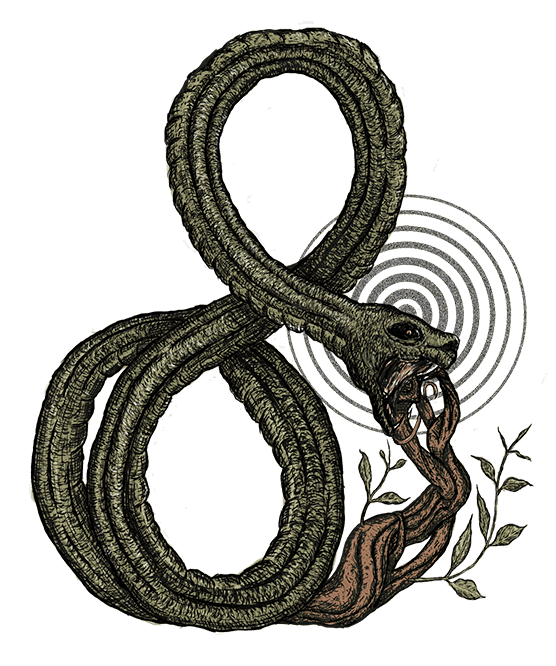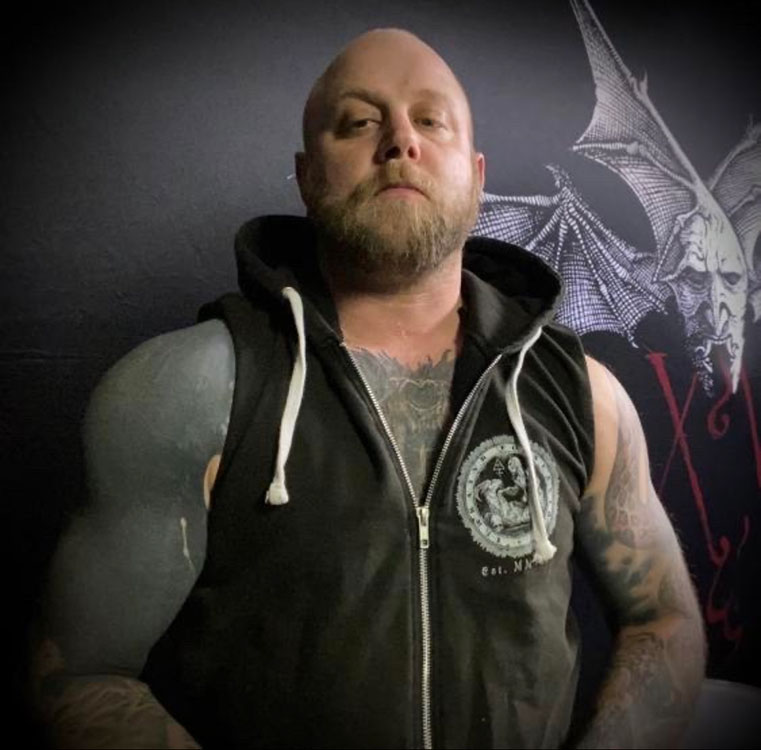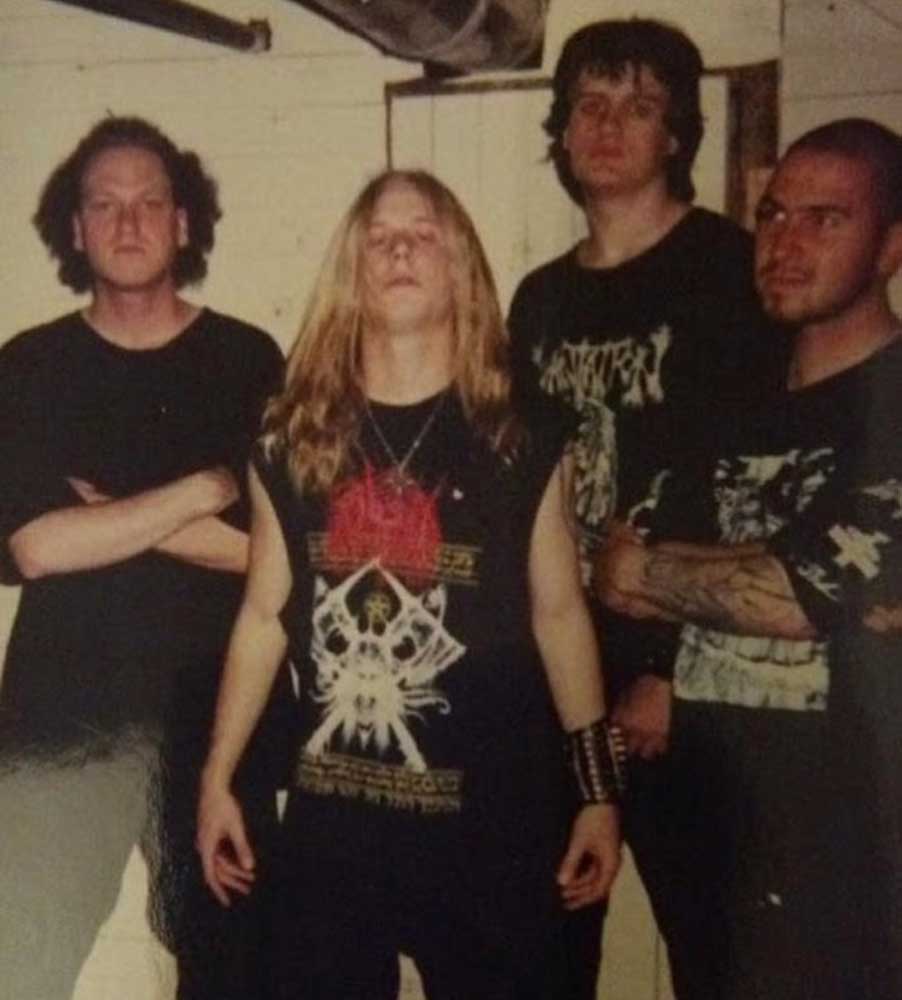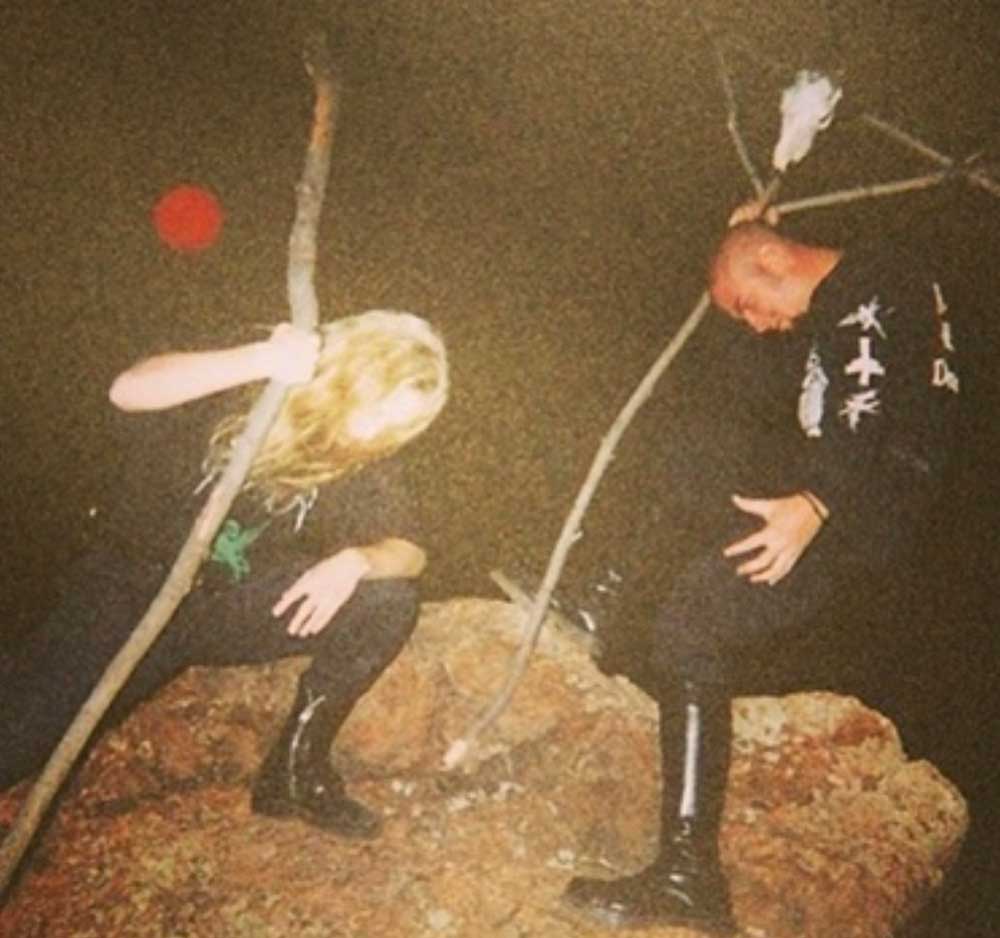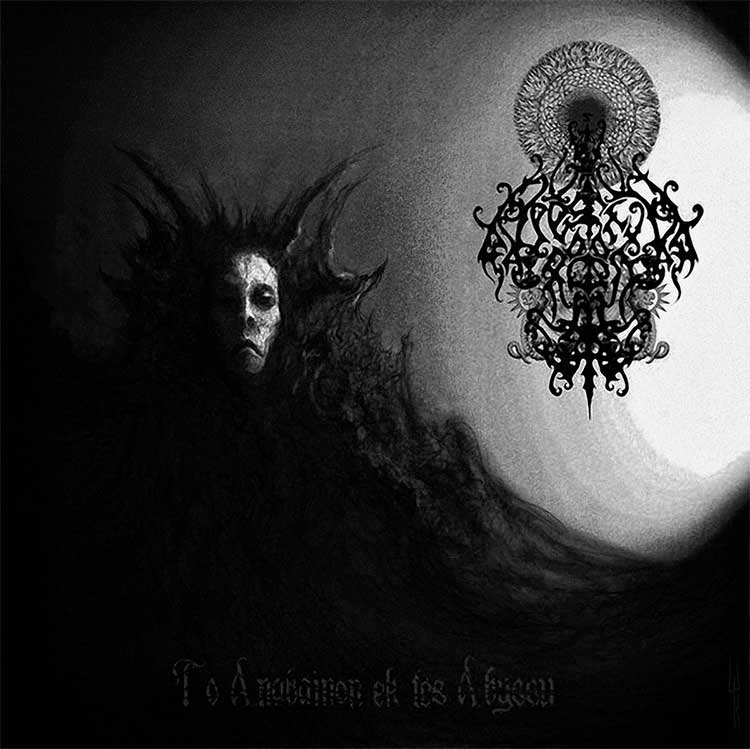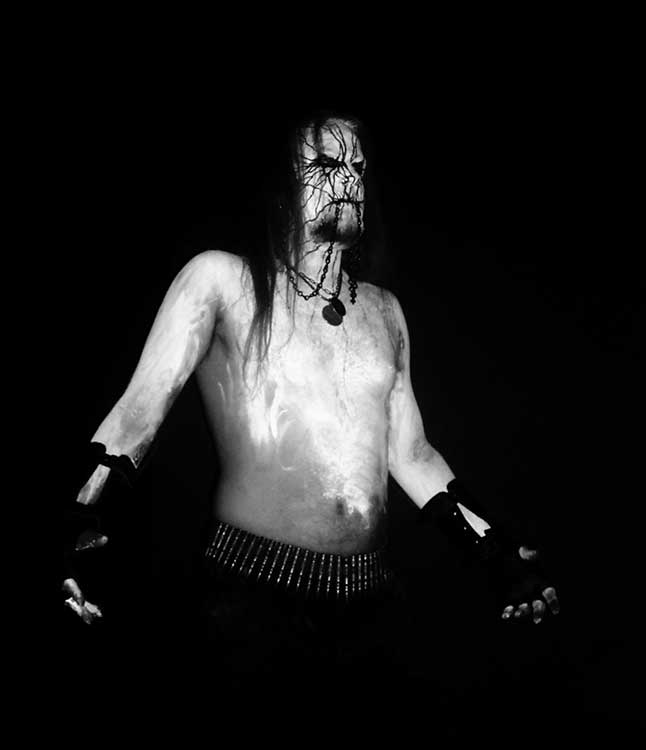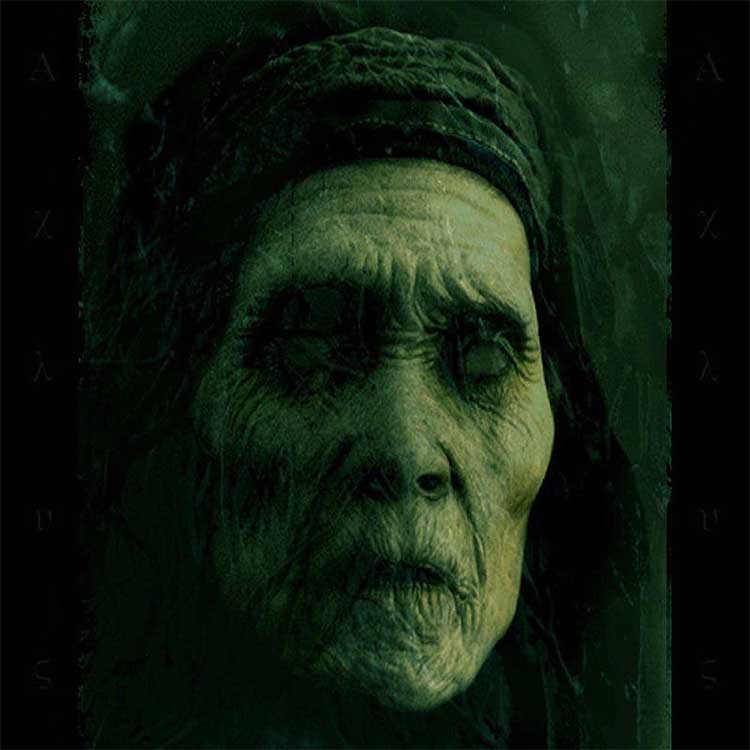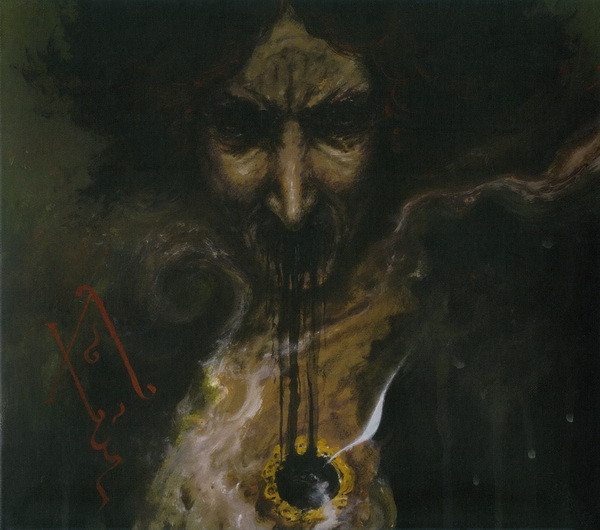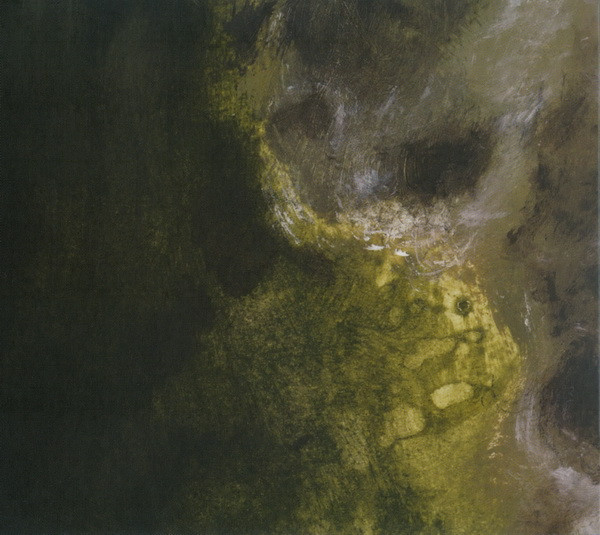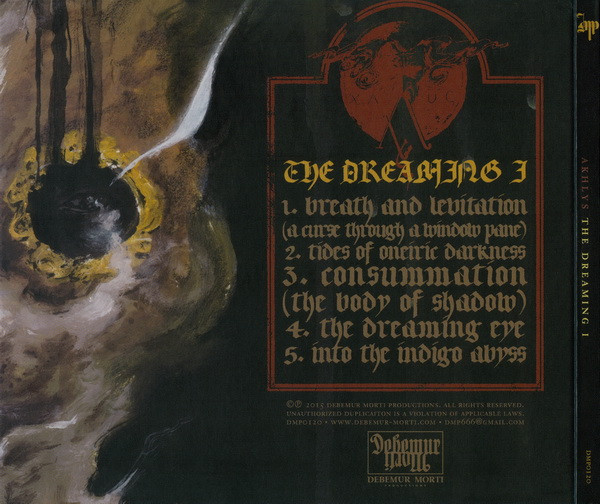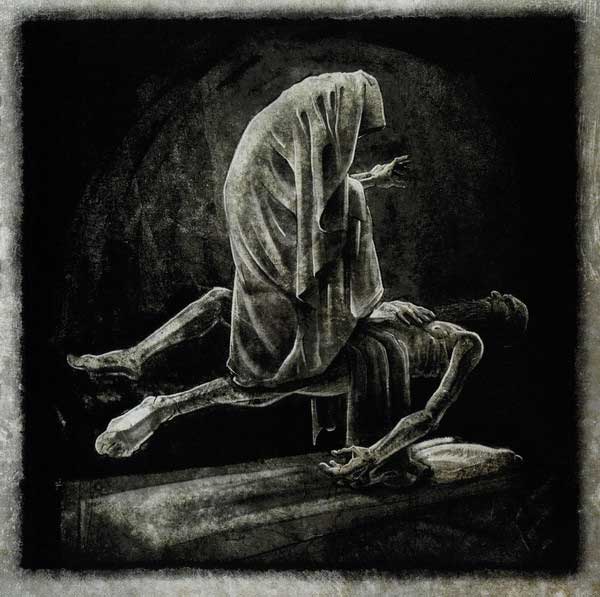Akhlys I
2024-03-21
by Niklas Göransson
The Seeds of Horror: Akhlys is a soundtrack to the dreaming darkness. US black metal veteran Naas Alcameth discusses the terrors in the night that shaped his spiritual outlook and artistic life.
NAAS ALCAMETH: I discovered AGHAST through black metal and was just blown the fuck away. “Hexerei…” is an absolutely terrifying album. Back then, if you missed the original CD release, it was incredibly hard to find. But man, when I finally tracked down a copy… I remember listening to it while looking at the cover and flipping through the booklet, thinking, ‘This is so dismal.’
AGHAST was a Norwegian-German duo known for a particularly harrowing brand of ritual ambient. Their debut album, “Hexerei im Zwielicht der Finsternis”, was released by Cold Meat Industry in 1995.
ALCAMETH: It effectively plays on the whole ‘witch in the woods’ theme, which later became quite cliché when popularised by films like The Blair Witch Project. AGHAST captured this essence of folkloric sorcery so masterfully; they did an amazing job with “Hexerei…”. That album set me on the path to dark, industrial ambient music – it’s probably right up there with “In the Nightside Eclipse” (EMPEROR).
EMPEROR’s 1994 debut – especially its orchestral approach and ‘astral feel’, as Alcameth puts it – was a tremendous influence on NIGHTBRINGER, the black metal band he co-founded with drummer and fellow guitarist Nox Corvus in 1999. Ophis joined on guitar the following year. Their first official release was “Horde of Darkenwood” – a 2001 split album with BELLUM, RHUNE, as well as Nox Corvus and Alcameth’s death metal band, EXCOMMUNION.
It wasn’t until the mid-2000s that Alcameth’s fascination with dark ambient materialised in his music. Combining a software called Absynth with manipulated samples, he created two ambient songs under the moniker TEMPLE OF NOT. Both of them ended up on a split CD alongside NIGHTBRINGER: “Rex Ex Ordine Throni”, released by Full Moon Productions in November 2005.
ALCAMETH: I didn’t know what the fuck I was doing. But there is some beauty in that; you have an idea and an intent, and you try to channel them without any finesse whatsoever. It’s very random in a sense but also fully genuine, and that is the heart of black metal. Look at “A Blaze in the Northern Sky”; do you think DARKTHRONE sat down and premeditated that shit for a long time? No, they just recorded it. That’s what I wanted to do – but with ambient.
The TEMPLE OF NOT tracks offer a primitive and mood-oriented form of ambient music, washing over the listener in waves of digital darkness. Roughly ten minutes into the first song, the droning monotony begins to fade; but rather than dissipating into silence, it gives way to a heart-attack-inducing inferno of distortion.
ALCAMETH: That was just me taking the volume slider all the way up, everything red and purposely clipping – and it came out absolutely horrific. Someone left a comment on a message board about falling asleep to TEMPLE OF NOT and then being woken the fuck up <laughs>. This is something I consider now, working on new AKHLYS material: how I left my comfort zone. Overall, I try to create the darkest, most dreadful shit possible; and sometimes, stepping outside your own head is necessary to achieve that.
How so?
ALCAMETH: It’s easy to fall into formulaic mindsets – especially as you age – and TEMPLE OF NOT was a prime example of breaking free from that. Going back to it now almost feels like listening to someone else’s work due to the distance and time that’s passed; I recorded those split songs almost twenty years ago. They’re pretty crude, and there are things I’d do differently now – but the roughness is what gives it beauty. That’s what I loved about the early Cold Meat Industry bands; they just went for it.
NIGHTBRINGER’s debut album, “Death and the Black Work”, saw the light of day in 2008, courtesy of Full Moon Productions. The same year, Alcameth poured his creativity into BESTIA ARCANA’s debut album, “To Anabainon ek tes Abyssu”.
ALCAMETH: BESTIA ARCANA was essentially a madman’s alchemical experiment – my take on blackened death metal. I found myself working on material that seemed too bizarre and outlandish to fit into anything else I was involved in. Listening to those riffs, with their unusual time signatures and the sheer oddity of it all, I realised, ‘This is its own entity.’ Truthfully, there was some concern that it came out too weird for anyone to like it.
Alcameth’s fears were not entirely unwarranted. Despite garnering a small die-hard following, “To Anabainon ek tes Abyssu” – released on CD by Daemon Worship Productions – ended up largely overlooked. It was later re-issued by Debemur Morti Productions but without making much traction.
Alcameth’s next foray into horror ambient came in 2009 when he started AKHLYS. In October of that year, an Oregon-based label called Starlight Temple Society released the project’s first record, “Supplication”.
ALCAMETH: “Supplication” was just me wanting to do some ambient again. It was issued on CD in a hundred copies – which tells you everything, really. That Starlight Temple Society guy is a most peculiar individual; I don’t know if you’re aware of him? He used to be very prolific on forums and released some strange, debatable shit. But just like Victor from Daemon Worship, he vanished. There are rumours that he might have died or something like that.
Why create another ambient project instead of resuming TEMPLE OF NOT?
ALCAMETH: Sure, “Supplication” could easily have been passed off as TEMPLE OF NOT – but at the time, I wasn’t connecting with that. Rather, I’d become obsessed with the notion of Akhlys, a kind of Hellenic pseudo-god form that I discovered through my studies.
In ancient Greek mythology, Akhlys embodies the darker aspects of the human experience. She is mentioned in various texts as a daughter of Chaos, associated with misery and sadness. In some traditions, Akhlys is personified as the goddess of the death-mist – a painful, gloomy fog that precedes dying – and the suffering of wounded soldiers.
ALCAMETH: I’d been researching this thing – and then started thinking about it, night after night. Simultaneously, as I grew increasingly obsessed with this idea of Akhlys, I was writing ambient music. I have this tendency where a concept enters my head, and I get absolutely consumed. Suddenly, it’s almost like thoughts coming from the outside in. When it seems so pronounced, I equate that to the personal daemon.
The personal daemon is another concept rooted in ancient Greek mythology, representing a guiding spirit that serves as a natural source of inspiration. Daemons are described as dwelling in a space between the divine and humanity, wielding influence that is neither good nor evil but instead nudges individuals toward their true potential.
Famed philosopher Socrates, for instance, often referred to his daemon as a voice presenting itself in the form of thoughts – a kind of divine intuition that might caution him against certain actions but never compelled him to do anything.
ALCAMETH: If something lingers in my mind for days or weeks, that’s when I know I need to act on it. It’s like your personal daemon is speaking; you become absolutely obsessed and fascinated with an idea and must pursue it at once. It feels like an external force is guiding you. So, if images and even a name start forming in my head – then why wouldn’t I call it that?
“Supplication” passed by relatively unnoticed. In the meantime, NIGHTBRINGER released “Apocalypse Sun” in 2010, followed by “Hierophany of the Open Grave” the subsequent year. In 2012, after thirteen years in the band he co-founded, Nox Corvus left NIGHTBRINGER.
ALCAMETH: That was devastating because Nox and I have been best friends since we were fourteen. You know, we played our first live show at a legit venue when we were just fifteen – what kids can say that now? Unfortunately, things came to a head. Nox and VJS didn’t get along at all, and there was a lot of internal strife. In retrospect, I probably didn’t handle things very well either. But it wasn’t that I let him go; he chose to leave. He dismissed himself from the band.
Menthor, a Portuguese drummer based in the UK, replaced Nox Corvus on drums. In the autumn of 2013, NIGHTBRINGER recorded their fourth album, “Ego Dominus Tuus”, which was released by Season of Mist in September 2014.
The same month, Alcameth began working on new AKHLYS material. In terms of basic musical approach and atmosphere, the resulting “The Dreaming I” is a continuation of the debut, with a notable exception for instrumentation – AKHLYS now had black metal elements. Furthermore, the line-up was expanded to include Ain on drums.
ALCAMETH: Nothing was preconceived; there were absolutely no plans in place. Inspired by my own unusual sleep and dream experiences, I wanted to explore both the emotional and esoteric aspects through music and create something from that. So, I just sat down and got to work, completely off the cuff. It felt like I was consciously adopting an approach that was the polar opposite of my usual methods.
In what way?
ALCAMETH: Typically, with NIGHTBRINGER there would be an exhausting, meticulous process of tracking new riffs and then tabulating them, followed by rigorous revisiting to examine and refine. “The Dreaming I” saw none of that; it was all about laying down a track, dubbing a second guitar, adding keyboards, and then moving on to the next piece. I never expected it to actually gain much attention. I figured it would be little more than a blip on the radar – just like “Supplication”. I was very mistaken.
“The Dreaming I” was released by Debemur Morti Productions in April 2015. It went on to receive critical acclaim, propelling AKHLYS to prominence in the US black metal scene.
ALCAMETH: Which is really ironic, right? Because I’d let go of all that control and premeditation. AKHLYS started as an ambient project and was virtually unknown before “The Dreaming I” – only a handful of people were aware of it. Initially, the album didn’t catch on. But over a period of six months to a year, it kept gaining momentum. And then, suddenly, AKHLYS exploded; so much so that many fans weren’t even aware of NIGHTBRINGER’s existence.
That must have been a bit awkward.
ALCAMETH: Truthfully, it was quite something to process. I felt as if I had reached this stage as a professional musician where my methodology was honed to be meticulous, taking considerable time and care. Then suddenly, I just kind of fuck off and do this thing with a much more spontaneous approach, and it becomes massive. It’s a real eye-opener for the future. Sometimes, it requires a jolt to realise you might be over-fixating on certain aspects or heading too far in one direction.
The conceptual heart of AKHLYS lies in the realm of dreams, as well as in the liminal spaces bridging slumber and wakefulness. Most prominently, it explores sleep paralysis – a transcendent state often characterised as a vivid, fully lucid nightmare. Over the years, I’ve observed this phenomenon to be particularly prevalent among metal musicians with esoteric inclinations, with Alcameth as a prime example.
ALCAMETH: This is a topic that I’ve both researched and experienced personally. The older I get, the less these things occur – but they still happen, especially during times of great stress. Interestingly, it’s way more common in childhood. This might be because kids are especially susceptible to altered states, lacking the rational barriers that adults develop.
‘Life is a dream forgotten in the slumber of death’ is how Naas Alcameth finishes most of his written interviews. Undoubtedly, the sleep paralysis experiences in his youth left a heavy imprint. One would assume that most who undergo childhood trauma will, going forward, seek to steer clear of the root cause. Alcameth, on the other hand, seems hell-bent on recreating these sensations.
ALCAMETH: <laughs> That probably says something about my spiritual orientation or the nature of my soul – however one might want to put it. Obviously, had I been subjected to different kinds of trauma, I probably wouldn’t be pursuing those experiences. Thankfully, I had a very good childhood. But as far back as I can recall, I was drawn to what’s generally considered ‘dark’ or ‘sinister’. From things as innocuous as horror movies, fantasy novels, drawing monsters, and so on, to a fascination with literal darkness and the night.
Sounds like most black metal Westerners from our generation.
ALCAMETH: True, nothing out of the ordinary for fans of this music. However, there were some quite abnormal – or even paranormal – occurrences that I experienced with relative frequency, such as night terrors. I’d wake up paralysed and unable to call out while being at least semi-conscious of my surroundings. Typically, there’d be a very tangible, if not fully materialised, presence looming over me; visitations that would fit classic descriptions of the ‘old hag’ or ‘mare’.
Encounters of this kind have been documented for over a millennium, weaving through the fabric of folklore and myth. The term ‘nightmare,’ with its etymological roots in the Old English word ‘mære’ – a demonic entity believed to bring bad dreams – dates back to at least the 10th century. Similarly, the ‘old hag’ as an oppressive presence felt upon the sleeper’s chest echoes through various cultures worldwide, suggesting a universal archetype of nocturnal terror.
These ancient accounts align strikingly with modern understandings of sleep paralysis. They describe an inability to move, a sense of pressure on the chest, and the presence of menacing figures. Before the advent of medical science, mythological entities could offer an interpretative framework for such experiences.
ALCAMETH: One of the more dramatic scenarios was a very pronounced sleep paralysis event I had at around twelve years of age. I seemingly could not snap out of this condition and went back and forth between waking and a sleepwalking-type state. I’d come down with a bad case of the flu, so my parents had given me NyQuil – which is a factor to consider.
NyQuil is an over-the-counter antihistamine medication used to alleviate symptoms of the common cold. The sedative effects can sometimes cause paradoxical reactions in children, leading to heightened agitation, vivid nightmares, and unusual behaviour.
ALCAMETH: I’d fallen asleep, so my dad must’ve carried me to bed. I distinctly remember this brief moment of me lying on my side, looking out through the open door into the downstairs living room. My parents had a framed Olympic poster – which isn’t noteworthy in itself, but what’s significant was my fixation on it, accompanied by overwhelming dread.
Alcameth’s account of intense unease, as well as fixating on an object, are classic characteristics of sleep paralysis. This condition occurs in transitions between slumber and wakefulness, particularly during the REM (Rapid Eye Movement) phase that follows deep sleep. During REM, the body naturally inhibits muscle movement to prevent itself from acting out dreams. However, if one wakes up before the REM cycle is complete, this natural paralysis can persist while conscious.
ALCAMETH: Next thing I knew, all hell broke loose. Apparently, I’d walked upstairs without pants, wearing just a shirt, and my mom noticed that I seemed to be having trouble breathing. I’m not sure of the legitimacy of the response, but her immediate reaction was to bring me into the bathroom and run a hot water steam bath, believing it would help. Whether that’s an old wives’ tale, I don’t know.
Steam inhalation is a traditional remedy often used to alleviate respiratory symptoms. It works by adding warmth and moisture to the air, which may help to loosen mucus, soothe the airways, and ease congestion.
ALCAMETH: Anyway, I don’t remember any of that. Suddenly, I found myself sitting on my father’s lap as he yelled at my mom, who was on the phone with 911. They thought I was having a seizure, and perhaps I was – who knows? Truthfully, I’ve only retained fragments of that memory. My parents really don’t like to talk about these things. I’ve brought it up a few times, but they’d rather avoid the subject altogether.
Many years later, while reflecting on these events and attempting to write some material around them, Alcameth realised that his older sister was present that night and asked her about it.
ALCAMETH: My sister is a very serious and successful individual, but she likened it almost to possession. Not quite as dramatic, but with similar characteristics. She recalled me oscillating between being a scared little boy and acting maniacal. Which, for me at that age, meant swearing – something I typically wouldn’t do. At one point, I apparently turned to her and aggressively asked, ‘What are you looking at, you fucking bitch?’
From the perspective of secular science, such behaviour could potentially be attributed to parasomnia – a category of nocturnal disorders that involve abnormal conduct, emotions, and perceptions during all stages of sleep, including arousal. They are more common in children and can manifest as walking, talking, or appearing to be awake and coherent when the person is actually asleep.
ALCAMETH: Some of what she recounted was almost comical, such as when my dad expressed frustration with the emergency response time, and I chimed in, ‘Yeah, what’s taking them so long? Fucking assholes.’ She also said I kept looking up at the corner of the room, alternating between pleading for help and switching to this other abrasive mode. At one point, I apparently shouted, ‘The Devil is coming out of me!’
Alcameth ended up using this for the lyrics of “Tides of Oneiric Darkness” from “The Dreaming I”.
ALCAMETH: The last I remember is waking up in the back of the car while my parents spoke in hushed tones. I overheard my dad say, ‘That was like something right out of The Exorcist.’ That remark has always stuck with me. My dad isn’t especially religious, but the event clearly unsettled him. I should add that I saw The Exorcist the same year this happened; and unlike most horror movies, I found it particularly terrifying. It resonated on a deeper level.
The Exorcist, a groundbreaking horror film from 1973, dives into the world of demonic possession. It tells the story of a young girl, Regan, who starts exhibiting strange and disturbing behaviour, leading her desperate mother to seek help from two priests.
ALCAMETH: At the hospital, the doctors wrote it all off as a hallucinatory reaction to NyQuil. Still, I went through the actual sleep paralysis experience many, many times beyond this, without any medication involved. These early episodes were nothing short of terrifying; I certainly didn’t want them to happen. Nonetheless – although initially scary – I also seemed to gravitate towards the phenomenon all that much more, which is likely what led me to metal music, Lovecraft-type literature, interest in the paranormal, and so on.
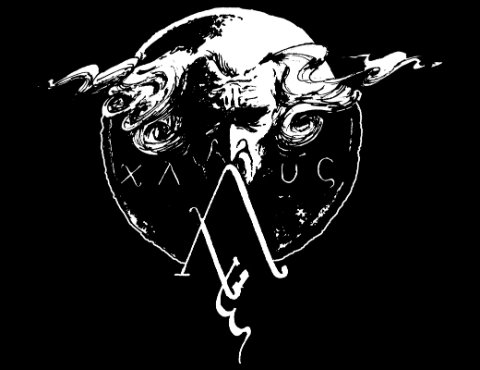
How much do you think being raised Roman Catholic played in?
ALCAMETH: I’m not sure. Being exposed to its rituals and concepts of divinity certainly left a lasting impression. I’d say my upbringing instilled in me a sense of the sacred. Of course, my notions of good and evil were subconsciously given form with icons such as the Devil, demons, and what have you. However, when these bouts of sleep paralysis occurred, they stood out as uniquely significant – as the only experiences in my life which felt so profoundly uncanny that they bordered on the divine.
Do you mean something like a confirmation of an existing spirit world?
ALCAMETH: Exactly. Because they felt so numinous. I mean, it is numinous! I’d never seen a ghost or experienced anything supernatural, so these moments of sleep paralysis were monumental. And so, despite it being a dreadful experience, I soon found myself actually hoping these episodes would occur. They served as undisputable reaffirmations that there truly is something more beyond our ordinary sensory experiences.
log in to keep reading
The second half of this article is reserved for subscribers of the Bardo Methodology online archive. To keep reading, sign up or log in below.
